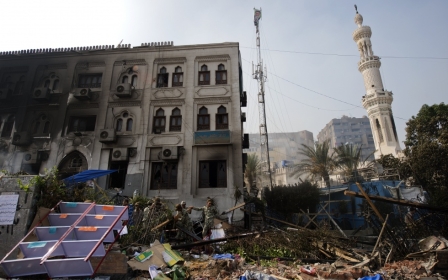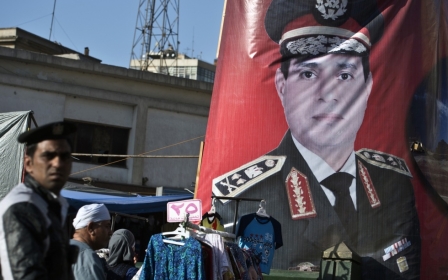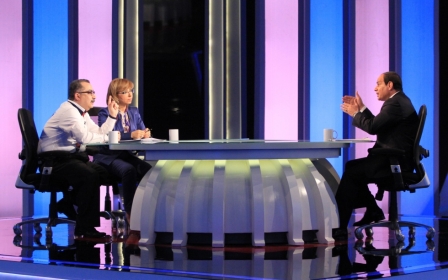Egyptian judiciary under scrutiny for 'video evidence'

The Egyptian judiciary has come under scrutiny once more as prosecutors in political activist Alaa Abdel Fatah’s trial presented a home video of his wife belly-dancing as evidence against him, The New York Times reported on Wednesday.
Abdel-Fatah is being retried in Cairo on charges of protesting and beating a police officer after being sentenced to 15 years in prison in June.
The clip of his wife prompted Abdel-Fattah to scream, “This is family stuff,” during court procedures earlier this week.
Lead defence lawyer, Taher Abul-Nasr told the court that the video was taken from a computer seized from the couple’s home without a search warrant and called the material irrelevant and defamatory, the newspaper reported.
According to the daily, most of the evidence presented Wednesday consisted of television images showing various protests with no scenes of Abdel-Fatah or the other defendants in the case.
The Egyptian court system has previously made incoherent rulings and used strange evidence during the trial of three Aljazeera journalists.
In May, an Egyptian court said that three jailed journalists – Peter Greste, Mohamed Fadel Fahmy and Baher Mohamed - must pay $170,000 for a copy of video footage used as the basis for a case against the journalists who were accused of conspiring to provoke unrest in Egypt. During an earlier court hearing in April, the prosecutors failed to produce the video and instead showed footage of family photographs and trotting horses, reported The New York Times.
All three journalists – jailed since December 2013 – worked for the English-language Aljazeera news channel, which the Egyptian government considers biased towards the Muslim Brotherhood - deemed a ‘terrorist group’ by the Sisi government.
In July, the courts jailed the same journalists for alleged ties with the Muslim Brotherhood, ruling that “the devil guided” the group to spread false news to defame the country.
In a similar case where 37 Islamists were sentenced to death and 492 others given life sentences in a Minya court in early June, the court issued the following statement to justify its decision:
“The accused came out of the depths of hell . . . to plunder Egypt's wealth, tyrannise its people and they killed the deputy commissioner."
International lawyers say such cases defame the Egyptian judiciary and reflect an increasing loss of credibility and accountability in the ruling processes.
“There is clear subordination to the police state,” said Ahmed Mefreh, legal researcher at Alkarama - a human-rights organisation campaigning on behalf of subjects of extra-judicial executions, disappearances, torture and arbitrary detention in the Arab world.
“These incidents make the credibility of the judge overseeing the case questionable. How can a judge see such videos as evidence to prosecute and indict someone on trial? These trials maintain no sense of seriousness or logic,” he told MEE.
Mefreh says the Egyptian judicial system has reached a disgraceful state since the military take over which ousted President Mohamed Morsi in July 2013.
“These trials reflect that the general prosecutor is part of the interior ministry in Egypt. At the same time, the interior ministry has become a tool that is used to violate the personal and basic human rights of Egyptian people,” he said.
The Egyptian government has led a fierce crackdown on opposition groups, specifically members of the Muslim Brotherhood, but also including journalists and bloggers.
According to several human-rights organisation, tens of thousands of Egyptian activists have been arbitrarily detained and imprisoned since 3 July 2013. While some are eventually released after judges habitually renew their detentions every 15 or 45 days, and there are currently more than 20,000 still captive.
Middle East Eye propose une couverture et une analyse indépendantes et incomparables du Moyen-Orient, de l’Afrique du Nord et d’autres régions du monde. Pour en savoir plus sur la reprise de ce contenu et les frais qui s’appliquent, veuillez remplir ce formulaire [en anglais]. Pour en savoir plus sur MEE, cliquez ici [en anglais].




